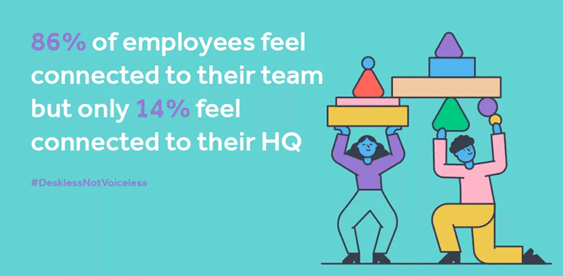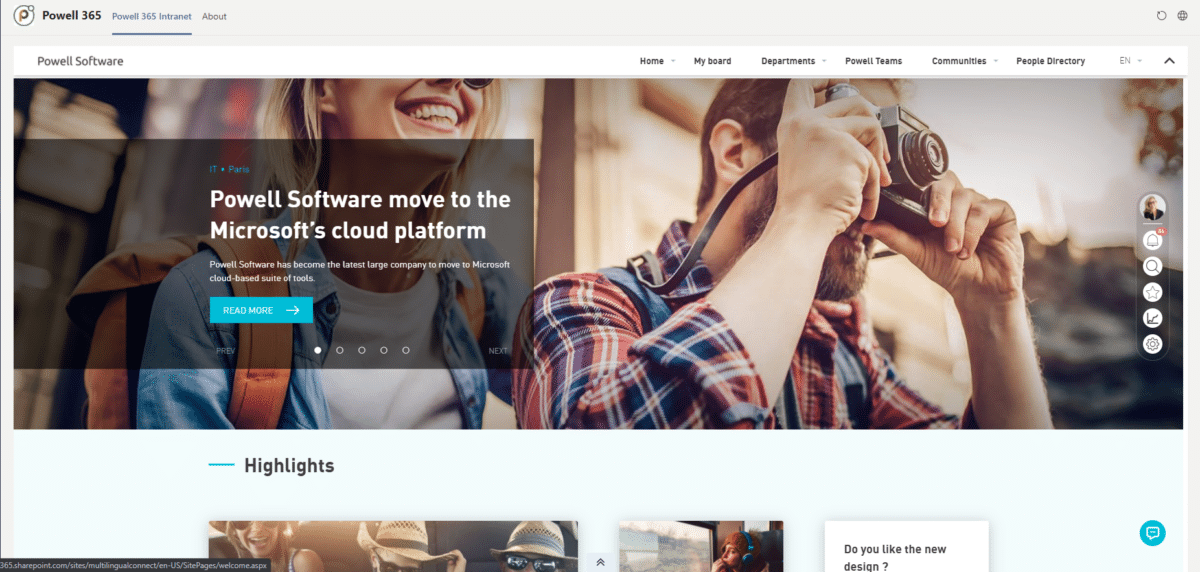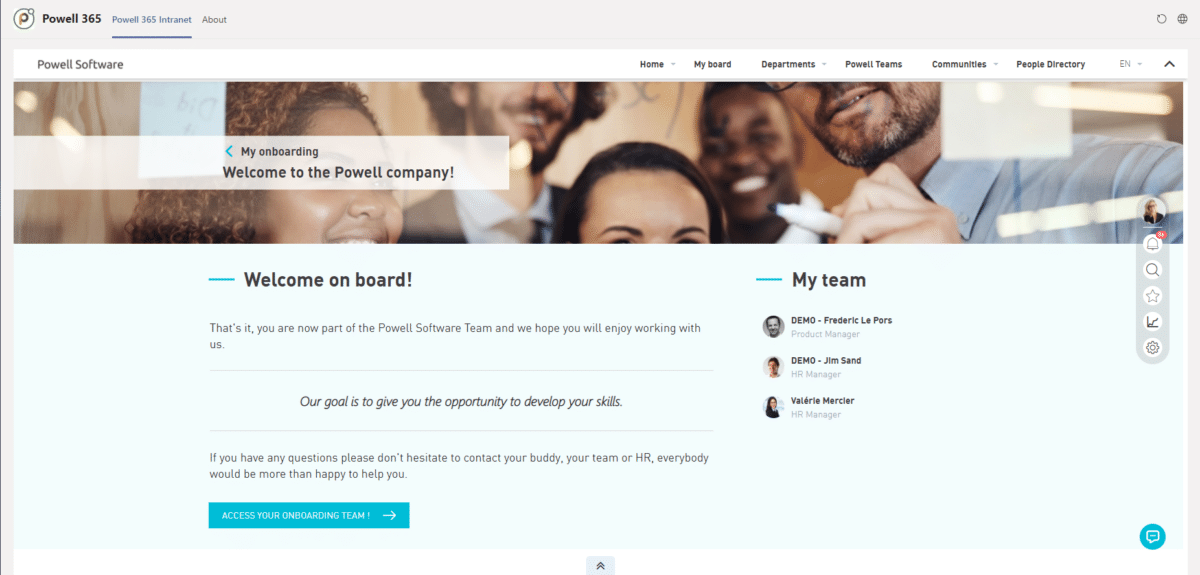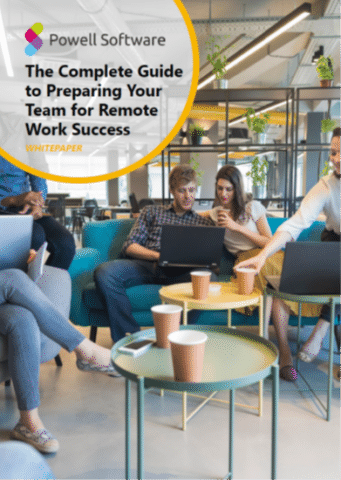Remote work is here to stay as organizations go hybrid
It’s been said numerous times that remote work is here to stay. While many employees have returned to the office, a survey in the UK found that 86% of employees want to continue working remotely at least one day a week. This hybrid workplace where employees can move between home and the office will become more popular as the benefits of remote work gain popularity.
For example, removing the commute saves an average of five hours a week for employees. This saved time increases productivity, with remote employees up to 40% more productive. Employers benefit financially too and can save up to $11,000 a year per remote worker.
More than half of remote employees feel disconnected
Despite the potential return, remote workers are starting to struggle. According to one survey, only 14% of employees feel connected to their organization.
This is a pretty shocking number, so why are companies failing and how can you keep your remote employees connected?
Connecting employees in a remote world is twofold. First, the connection between employees and the organization needs to be built. Then, the social connection between colleagues and teams must be facilitated. Fortunately, there are many digital communication and collaboration tools available to employees that can improve both.
How to connect remote employees with a company intranet?
Remote employees don’t have a physical office to walk into, the likelihood is their office is just another room in their home. Yet, savvy leaders will recognize the potential to re-create the idea of an office in a modern and accessible format.
Organizations can create a shared virtual workspace accessible to all employees through a digital workplace. Once employees open their laptops in the morning they will be able to access a workspace inclusive of in-office and remote workers. Two tools, the intranet, and a collaboration platform work together to better connect employees. A corporate intranet is particularly helpful in connecting employees to the organizations.
Ensure messages get to everyone
Connecting employees to the organization relies on steady and open communication. When employees miss out on important updates and information they quickly fall out of touch with what’s going on. Employees need to be aware of what is happening internally. They must have a clear overview of any changes, and receive the same information as employees in-office, with no delay.
A corporate intranet can facilitate this by allowing communications to flow from the top-down. It provides a platform for managers and leaders to pass information to everyone, in a place where they will see it. One of the easiest ways to do this is to post important announcements on the intranet home page. Therefore the intranet is the first thing employees, remote and in-office, see when they log into their digital workplace.
Store information in a central location
Employees will start to feel disconnected from an organization when they can’t access the information they need. Where resources are not readily available and stored centrally, remote workers lose time looking for documents and become frustrated. If information is only available to in-office employees this can cause a disparity in productivity levels.
The corporate intranet stores documents so that they are available to all regardless of their location. To connecting your remote employees you need to give them the basic information and documents they need to get their work done. For example, different employees might need branding guidelines when creating a presentation. If this information is stored on the marketing intranet page, everyone can easily find it. Or an employee might want to know the guidelines on taking holidays, they can save time if answers to common questions were on an HR intranet page.
Recognize employees and achievements
Remote employees can easily feel forgotten about by employers because they aren’t visibly in the office. This feeling of being hidden has the opposite effect than most employers would like to believe. Teleworkers aren’t slacking off but instead working up to 38 extra hours a month, or a full work week, while at home. When this effort isn’t rewarded or recognized employees can start to question why they are doing more work and being treated as if they’re doing less. Feelings of resentment can spiral into a disconnect.
Recognition can go a long way towards showing employees that they are valued. In a virtual world, the digital workplace is the ideal tool for giving shout-outs to employees. The best part is, it costs the business nothing and reaches employees in their shared workspace.
The corporate intranet is the right platform for connecting employees to the organization because it’s suited to top-down communication. When it comes to building bonds between employees, they need a tool that allows more collaboration.
How to connect remote employees with Microsoft Teams?
A platform like Microsoft Teams allows employees to instantly connect throughout the day, collaborate on projects, and work together easily. It’s a fundamental tool for keeping remote workers connected but is useful for everyone despite their role or location.
Provide collaboration tools
The evidence suggests that remote workers are as productive from home as in-office, but without one key ingredient this could be short-lived. Nearly 75% of employees fear that collaboration suffers in a virtual setup. When employees can’t work together effectively a few things happen. Firstly, their workload increases as they try to complete tasks alone. Secondly, a sense of loneliness creeps in as each worker focuses on their individual work. Thirdly, no one knows what the others are doing which lends to overlaps or misalignment. The list could go on.
Collaboration and teamwork become even more fundamental in a remote world. By connecting employees for their day-to-day work, team members build a connection with each other. This in turn can help build a strong attachment to the organization. The first step to connecting employees to each other is providing a suitable collaboration platform, such as Microsoft Teams. The second step is creating a teamwork culture where collaboration is encouraged.
Read: Why Foster a Teamwork Culture with Collaboration Tools
Let connections happen without complicated planning
Those who have been using Microsoft Teams for several months have started to get to grips with the tool, but have yet to leverage its full potential. They have also found it difficult to replicate some of the common connection opportunities that would happen in the office.
One thing that nearly all employees miss is the casual coffee machine conversations that used to be so common. Colleagues will take any chance they can get to make a coffee and chat with co-workers they bump into on their way. Many have tried to replicate this on Teams, but struggle to find a time that suits everyone. Unless HR sits down and plans a time to suit everyone’s schedules and invites people from every department, most coffee chats take place between those who are already friends. Employees don’t have the chance to connect with staff from other parts of the business.
This is where the digital workplace, more specifically Powell 365 can help. The Powell Teams virtual coffee machine will bring coffee chats into the virtual world with ease. The organizer only has to click a few buttons and employees will be invited to join a coffee chat at a time that suits them. Instant connection, with minimal effort.
Interested in seeing the coffee machine in action? Discover the solution in detail with this video.
Conclusion
Keeping your remote employees connected doesn’t have to be complicated but it does require effort. Having the right tools in place will ensure your organization can get off to the best start. Understanding how to use the tools will then be the key to success.
Learn the ins and out of remote work success with our downloadable whitepaper.






